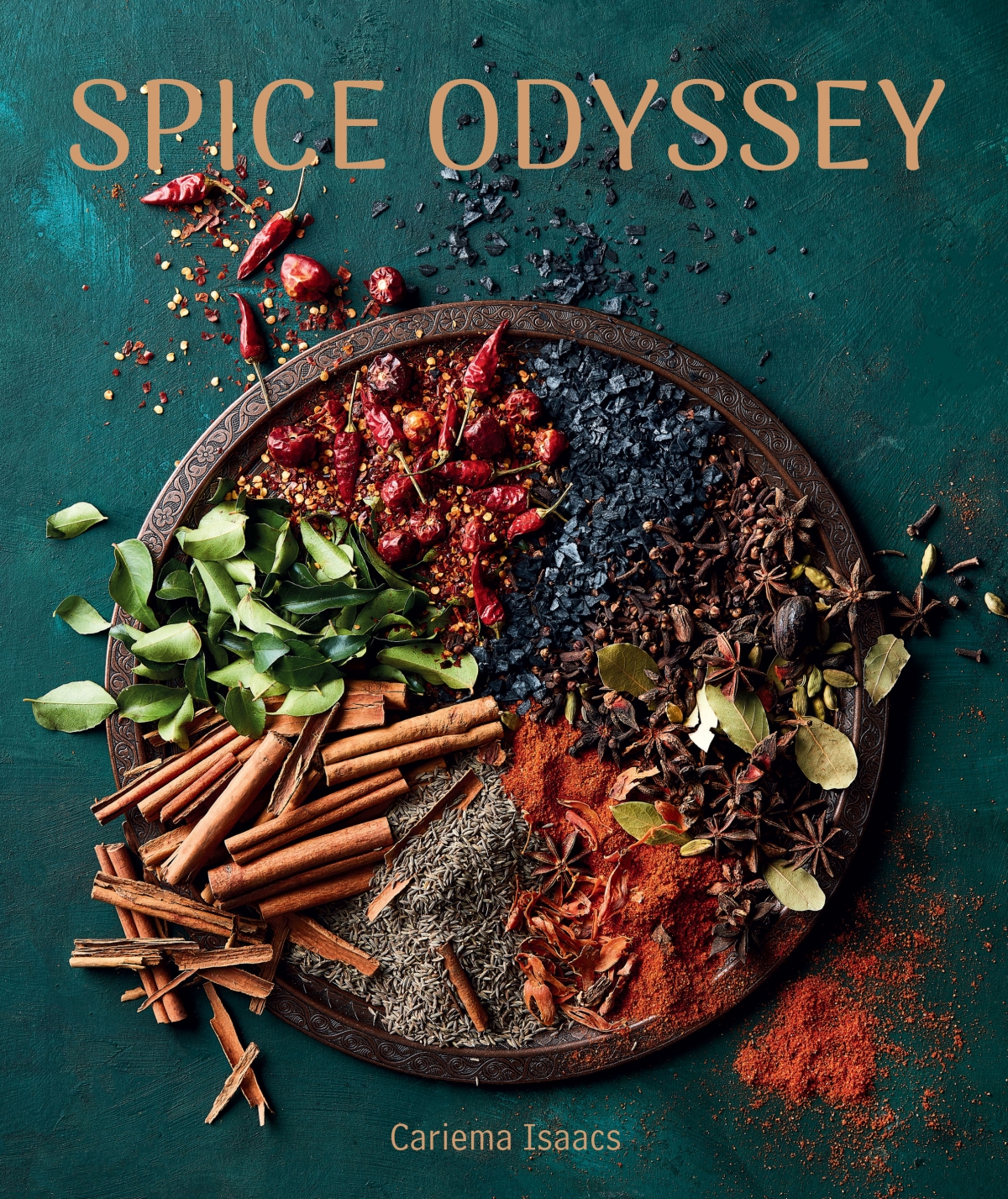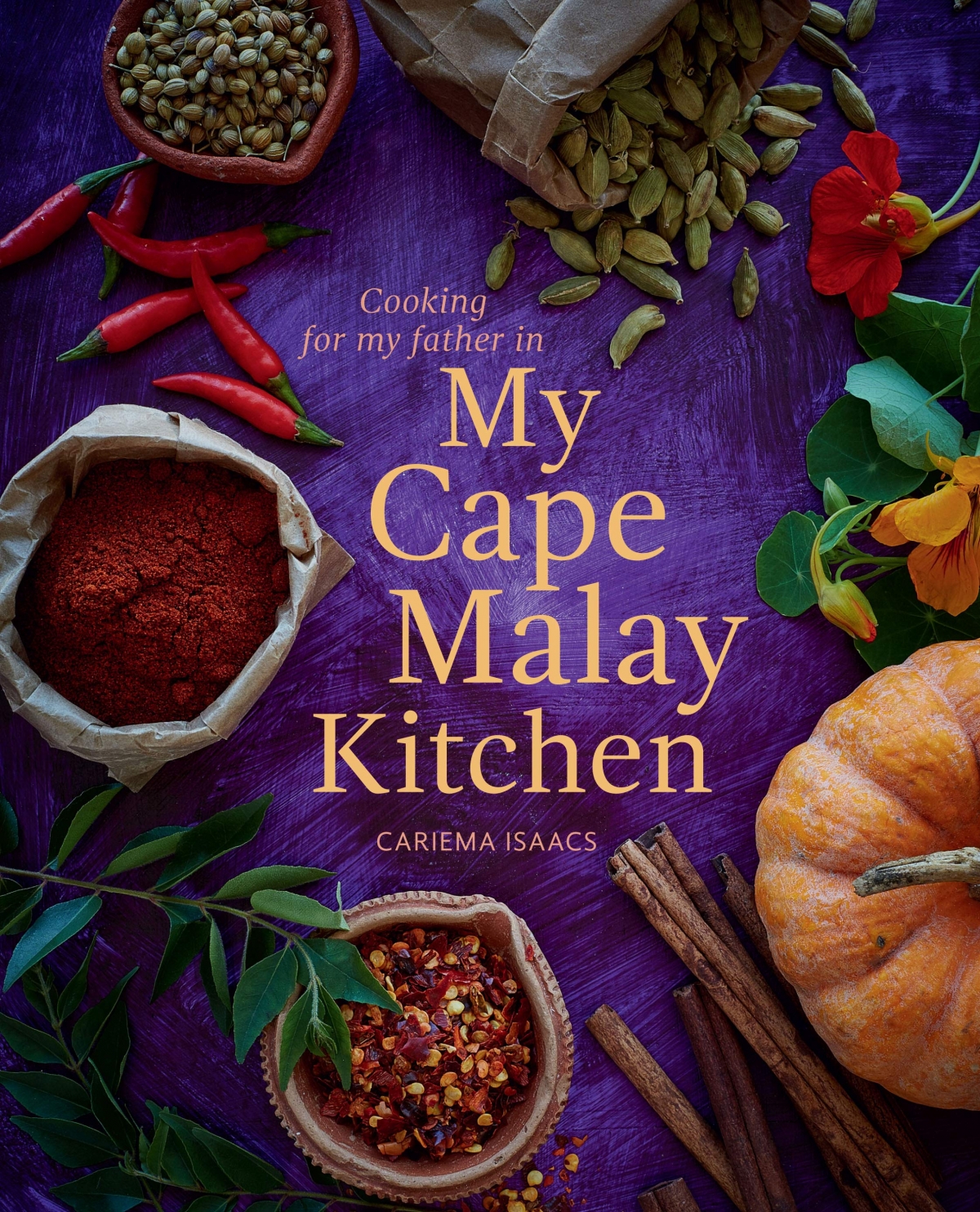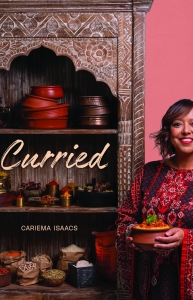
Curried embodies a culinary curiosity and global consciousness for the times. Mindful of both environmental responsibility and affordability, Cariema celebrates the nourishing comfort of pulses and legumes in a multitude of wholesome and delicious vegetarian curries for everyday cooking. Try Cariema's Vegetable Butter Curry, or vegetable makhanawala, and a mouth-watering tandoori-glazed salmon.
Vegetable Butter Curry
or vegetable makhanawala
“If you love butter chicken or the lentil version known as dal makhani, you’ll love this Goan version. I have so many friends who hail from Goa and whose personalities can be likened to this curry – bright, vivacious, expressive and oh, so sassy! The name ‘makhanawala’ means ‘with lots of butter and cream’. Who cares about a diet when you can eat well? And if you do have a Goan gracing your table, you’ll find your plate constantly topped up and conversation flowing!”
 Serves: 4–6
Serves: 4–6
6 baby potatoes, peeled
2 large carrots, cut into 4 cm chunks
50 g ghee or 2 Tbsp (30 ml) peanut, canola or sunflower oil
1 medium-size onion, finely sliced
3 cloves garlic, peeled and crushed
1 thumb-size piece fresh ginger, peeled and grated
1 can (410 g) Italian whole tomatoes, skinned
1 tsp (5 ml) Kashmiri chilli powder
1 tsp (5 ml) each ground coriander and ground cumin
¼ tsp (1.25 ml) ground cinnamon
½ tsp (2.5 ml) each turmeric and garam masala
1 Tbsp (15 ml) butter chicken curry paste or an all-purpose curry paste
1 tsp (5 ml) desiccated coconut
Salt to taste
½ C (125 ml) water
25 g raw cashew nuts
10 string beans, topped and tailed
8 cauliflower florets
½ C (125 ml) frozen or fresh peas
1 Tbsp (15 ml) white sugar
¼ C (60 ml) each plain yoghurt and double cream
1 handful chopped fresh coriander
Cook the potatoes and carrots separately in boiling salted water for 10 minutes or until just tender. Drain, then set aside.
Heat the ghee or oil in a medium-size saucepan on medium heat. Add the onion and sauté for 10 minutes or until golden.
Add the garlic and ginger and sauté for a minute or two.
Add the canned tomatoes and bring to a simmer for about 5 minutes.
Add all the spices, curry paste, coconut, salt and water, and simmer for 10 minutes.
In a mini food processor, or using a pestle and mortar, blend the cashew nuts to a paste with 2 Tbsp (30 ml) water. Stir this into the sauce, followed by all the vegetables, apart from the potatoes but including the carrots. Add another 100 ml water and simmer for 10 minutes until the vegetables are cooked through.
Stir in the potatoes, sugar, yoghurt and cream and cook for a further 2–3 minutes. Garnish with coriander and serve.
TIP: The Kashmiri chilli powder can be substituted with any regular chilli powder. Don’t be tempted to use a blended masala or curry powder – this will compromise the taste and colour of the curry.
Amina’s Wonder Spice Tandoori-Glazed Salmon
"The story of Amina’s Wonder Spice is an endearing one. Abdulgani Rahman was working for a clothing retailer in Durban, South Africa, and found it difficult to survive on his salary. After being asked to arrange a barbecue for his then employers, the guests complimented his marinade and some even suggested he bottle and then sell it. With an initial outlay of just R375 ($60), Abdulgani and his wife, Amina, bottled their first two products – Chicken Tikka and Steak & Chops – and started selling them. The rest, as they say, is history. The essence of this quality-based company is that all its products are ‘ready mixed’ and ‘ready to use’, making cooking simpler, easier and less time-consuming. My kitchen pantry is incomplete without Amina’s Wonder Spice range!"
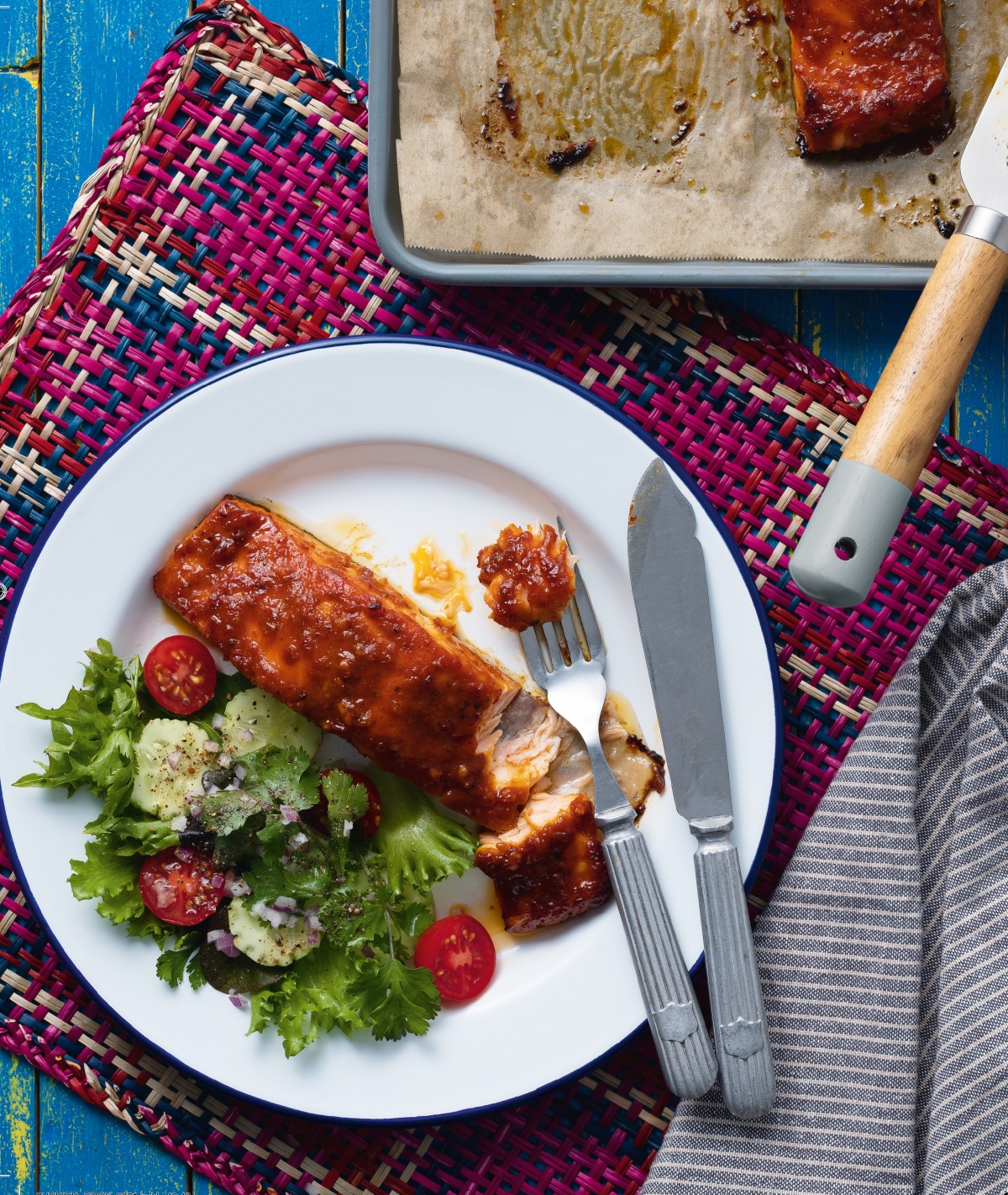 Serves: 6
Serves: 6
6 salmon fillets, skin on
1 lemon, thinly sliced
FOR THE TANDOORI GLAZE
3 Tbsp (45 ml) Amina’s Tandoori Marinade
3 Tbsp (45 ml) honey
2 cloves garlic, peeled and finely minced
2 Tbsp (30 ml) olive oil
2 tsp (10 ml) roasted masala
1 thumb-size piece fresh ginger, peeled and thinly sliced
Salt to taste
PREPARING THE TANDOORI GLAZE
Place all the ingredients into a small bowl.
Give this a good mix and set aside.
PREPARING THE FISH
Preheat the oven to 220 °C. Line a baking tray with baking paper.
Place the salmon fillets on the baking tray, skin-side down. Use a pastry brush to coat the flesh of the fish with the tandoori glaze.
Reduce the heat of the oven to 180 °C and place the fish on the middle shelf of the oven. Grill the fish for 8–10 minutes.
Serve with slices of lemon, a green salad and naan bread.
TIP: This marinade is ideal for fish and chicken grilled in the oven or on an open fire. I’ve also used the marinade for tuna steaks and tuna kebabs.
Heirloom Tomatoes and Brinjal Rogan Josh
"This curry is a picture-perfect showpiece of what ‘culinary spring’ looks like! Bursting with vibrancy, it’s packed with colourful ingredients like the heirloom tomatoes and baby brinjals. Tomatoes are also perfect for creating lush curry sauces, but they must be ripe (overripe, is even better). This is one of those times when you have to leave the couch and go in search of a farmers’ market armed only with your wallet and a fairly big basket, to stock up on one of those glorious vegetables the season has to offer!"
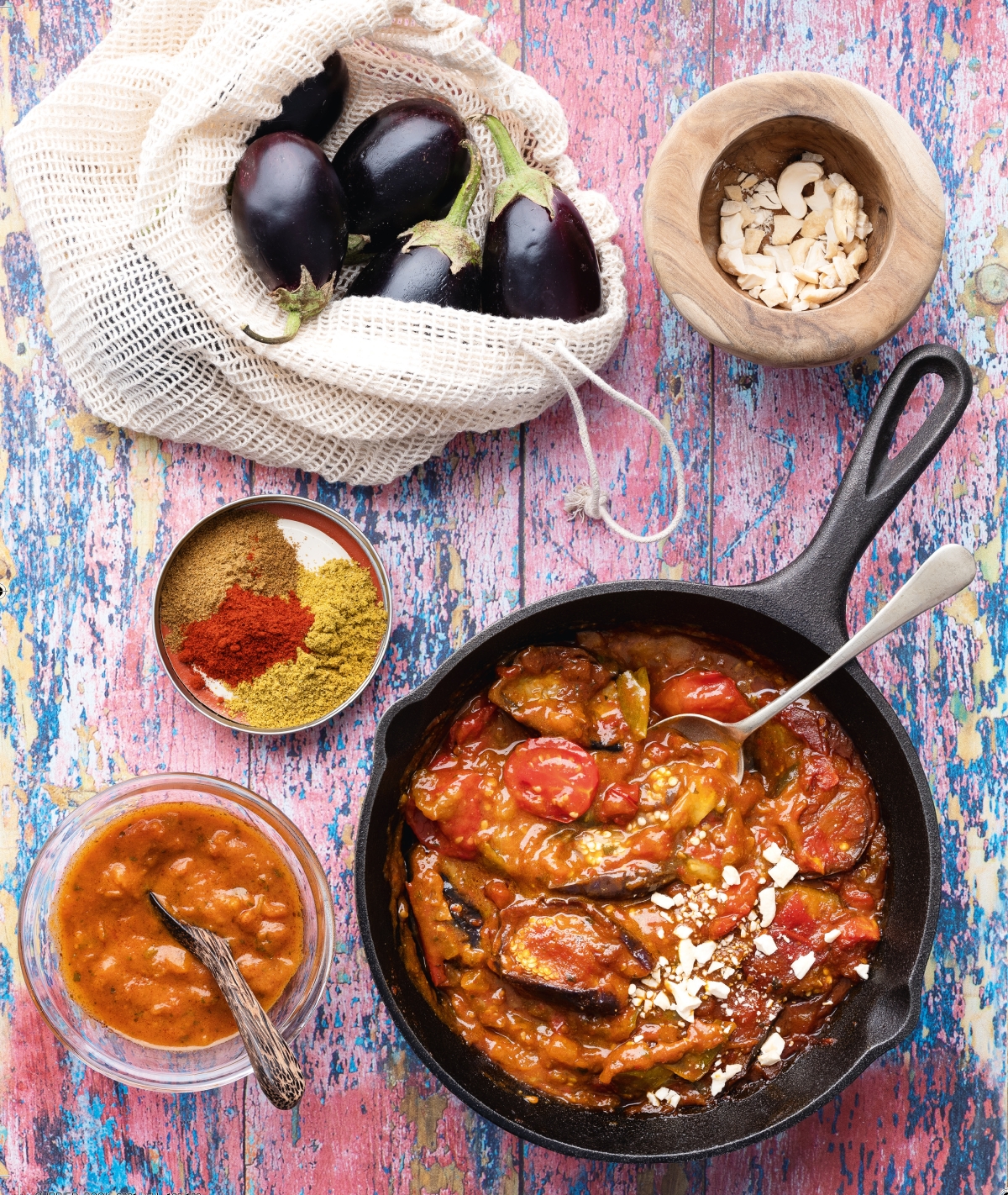 Serves: 4–6
Serves: 4–6
1 lemon, halved
6 baby brinjals, stalks removed, rinsed and halved
¼ C (60 ml) water
1 punnet (600 g) heirloom or heritage cherry tomatoes
2 Tbsp (30 ml) olive oil
1 tsp (5 ml) ground cumin
1 tsp (5 ml) ground coriander
½ tsp (2.5 ml) Kashmiri chilli powder
1 Tbsp (15 ml) white sugar
Salt to taste
2 Tbsp (30 ml) rogan josh curry paste or 1½ C (375 ml) rogan josh cook-in sauce
1 handful cashew nuts, pounded to form coarse crumbles (optional)
1. Preheat the oven to 180 °C.
2. Rub the lemon halves over the brinjal flesh to prevent it from discolouring.
3. Heat a medium-size ovenproof saucepan on medium heat. Add the water and brinjals, skin-side down, to the pan. Cook, covered, for 5–8 minutes or until the water has evaporated and the brinjals are tender to the touch.
4. In the meantime, portion the tomatoes, halving the medium-size ones, quartering the larger ones and leaving any smaller ones whole.
5. Add the portioned tomatoes, oil, spices, sugar, salt and curry paste to the saucepan and give this a good mix.
6. Turn the brinjal halves over and give the pan a little shake.
7. If you are using nuts, scatter over the cashew crumbs and transfer the saucepan to the oven.
8. Cook, uncovered, for 20–25 minutes or until the sauce has reduced and the vegetables are golden. Add more water if you prefer a saucier curry.
9. Garnish with cashew crumbs (if using) and serve hot with fluffy basmati rice and poppadums.
TIP: Use a saucepan that is ovenproof because the curry is made on the stovetop but finished off in the oven. I’ve also used baby brinjals for this recipe because they are the perfect vegetable to make a vegetable curry. They have a meaty texture like mushrooms and soak up the curry flavours and juices like a sponge. If brinjals are not in season, then opt for butternut squash or even carrots.
Carrot Halwa
"Carrot halwa is a traditional Indian dessert made from carrots and milk. It is rich and creamy in texture and is as popular in the Middle East as it is in India. This comforting, warm dessert is ideal for the winter and autumn months, when temperatures have dropped, and the body yearns for a bit of warmth."
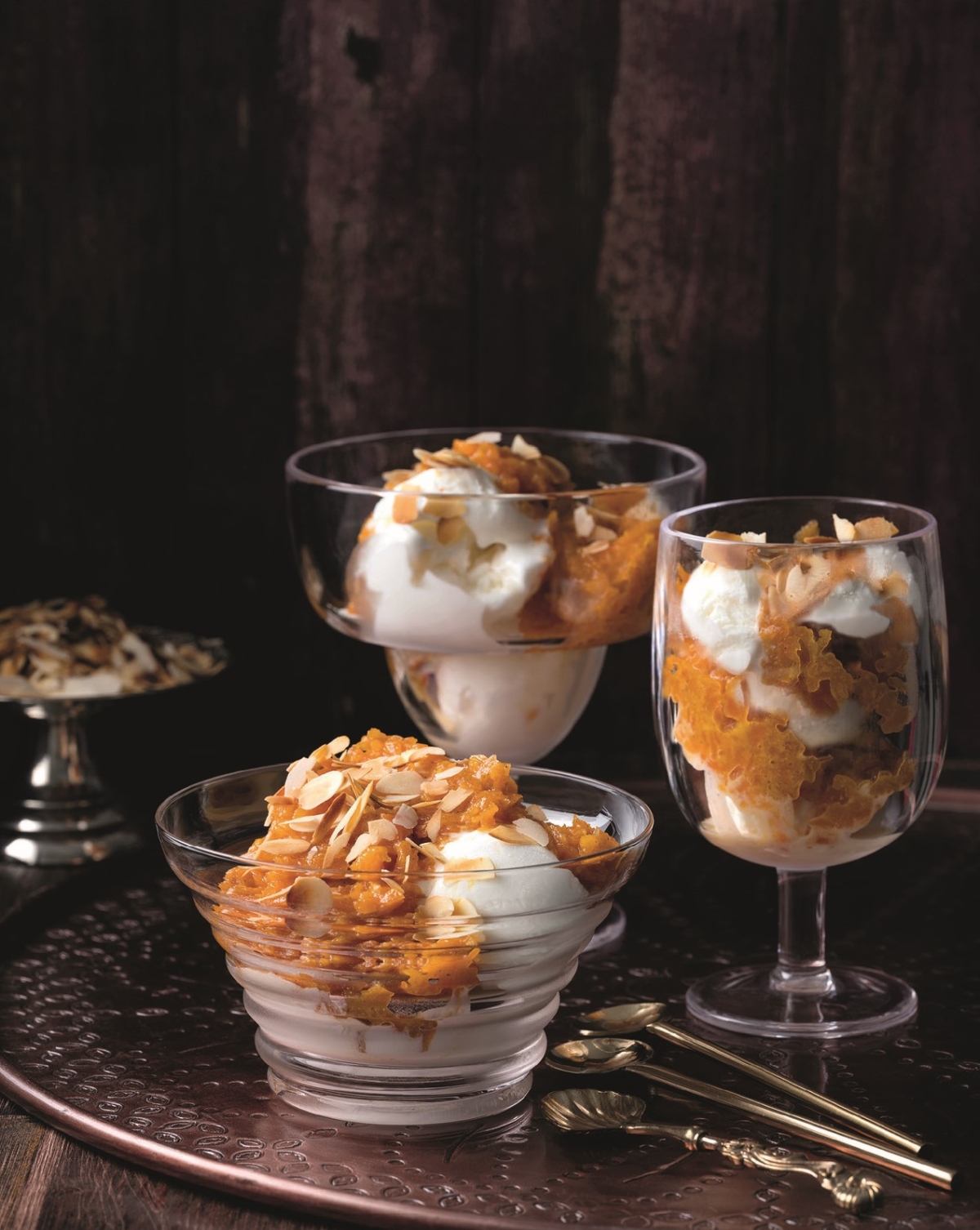 Serves: 4–6
Serves: 4–6
500 g (4–6) medium-size carrots, peeled, rinsed and grated
2 C (500 ml) full-cream milk
3 Tbsp (45 ml) ghee or clarified butter
¼ C (60 ml) flaked almonds
180 g white sugar
¼ tsp (1.25 ml) ground cardamom (or 3 large cardamom pods, husked and ground)
1 Tbsp (15 ml) flaked almonds, lightly toasted, for garnishing
1. Place the grated carrots and milk in a medium-size saucepan on medium heat and simmer for 7–10 minutes.
2. Don’t be alarmed if the mixture appears as if it’s curdled, it’s perfectly ok. Remove from the heat and set aside.
3. Heat another medium-size pan on medium heat. Add the ghee and cook for about a minute until it is melted.
4. Add the flaked almonds and fry them until they have a deep golden brown appearance.
5. Transfer the cooked carrots and milk mixture to the pan with the fried almonds.
6. Add the sugar and reduce the heat to low. Cook for about 30 minutes, stirring intermittently to prevent scorching.
7. Simmer gently until all the moisture has evaporated.
8. The halwa is ready when the ghee begins to leave the sides of the pan and the colour of the mixture has transformed into an intense orange colour.
9. Lastly, stir in the cardamom powder.
10. Serve hot, with a dollop of vanilla ice cream and garnish with toasted flaked almonds.
TIP: Don’t be tempted to increase the quantity of sugar when you do a taste test while the halwa is hot, as your taste buds will not be able to judge the sweetness. Instead, scoop out a teaspoonful, cool it, taste it and then adjust the sugar to your individual taste.
Recipes extracted from Curried by Cariema Isaacs, out now.
Twitter: @cariemaisaacs
Instagram: @cariema.isaacs
__________________________________________________________________________________________________________________________________________________
  |
by Cariema Isaacs
|
ALSO BY THIS AUTHOR
Right this way for cosy eating with three mouth-watering recipes from Dinner at Matloha’s









